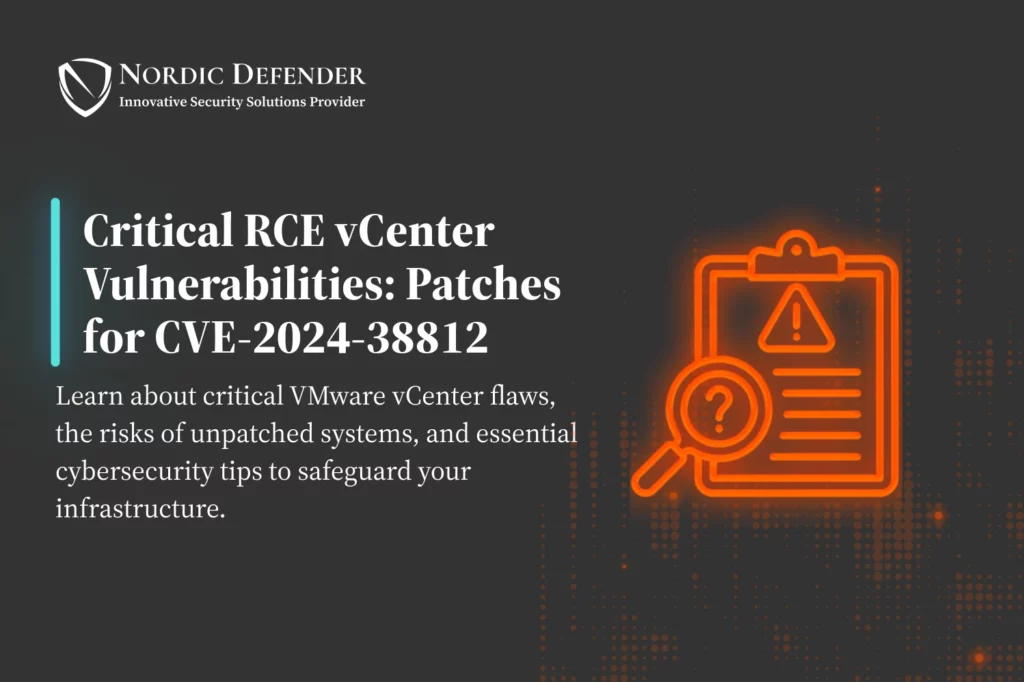A critical vulnerability (CVE-2024-38812) was recently uncovered in VMware vCenter Server, a widely used tool for managing virtualized environments. This flaw, with a severity score of 9.8/10, is a heap-overflow vulnerability that allows attackers to execute arbitrary code remotely by sending specially crafted network packets. The potential for exploitation is high, especially in environments that heavily depend on virtualized infrastructure, making this vulnerability particularly dangerous for large enterprises and organizations with complex IT systems.
Another flaw, CVE-2024-38813, permits privilege escalation, allowing attackers to gain root access on affected systems. This could further amplify the damage by giving malicious actors complete control over the server, including the ability to install malware, exfiltrate data, or disrupt operations. Together, these vulnerabilities represent a significant threat to organizations using VMware vCenter Server, especially those that have yet to implement effective patch management or have external-facing systems accessible over the network.
The Importance of Patch Management in Cybersecurity
In cybersecurity, timely patching is one of the most critical lines of defense against exploitation. However, many organizations lag behind in applying security patches due to the complexity of their infrastructure, potential downtime, or resource constraints. Attackers often exploit this gap, targeting vulnerabilities that remain unpatched weeks or even months after a security update is released.
To protect against these VMware vulnerabilities, it is imperative to update to the latest versions immediately: VMware vCenter Server 8.0 U3b and 7.0 U3s. Failing to apply these patches exposes systems to significant risks, including data breaches, ransomware, and denial-of-service attacks. Additionally, for organizations with a large-scale virtualized environment, the consequences of a compromised vCenter Server could be catastrophic, affecting not only core business services but also sensitive customer data.
Steps to Safeguard Your VMware Infrastructure
- Immediate Patch Application: Prioritize updating VMware vCenter Server to the patched versions as soon as possible. This should be done in a controlled environment to ensure there are no disruptions to services.
- Regular Vulnerability Scanning: Regularly scan for known vulnerabilities within your IT infrastructure. Automated tools can help identify unpatched systems and provide insight into areas of high risk.
- Network Segmentation: Limit network exposure for critical management systems like VMware vCenter. By isolating them from the public internet and implementing strict firewall rules, you reduce the risk of exploitation.
- Principle of Least Privilege: Review user access policies and restrict administrative access to those who absolutely need it. This minimizes the chances of a successful privilege escalation attack.
- Monitoring and Incident Response: Implement continuous monitoring and ensure your incident response plan is up to date. This allows for quicker detection of potential breaches and faster remediation efforts.
Nordic Defender’s Role in Securing Your Virtual Infrastructure
As a cybersecurity leader, Nordic Defender is committed to helping organizations maintain secure infrastructures. We offer comprehensive patch management and vulnerability assessment services that ensure critical updates are applied promptly and security weaknesses are identified before they can be exploited. With the rise of complex threats targeting virtualized environments, our solutions provide the necessary visibility and protection to safeguard your business operations.
In today’s threat landscape, staying one step ahead is key. Contact us today to learn more about how we can help you secure your VMware infrastructure and protect your business from emerging cyber risks.
